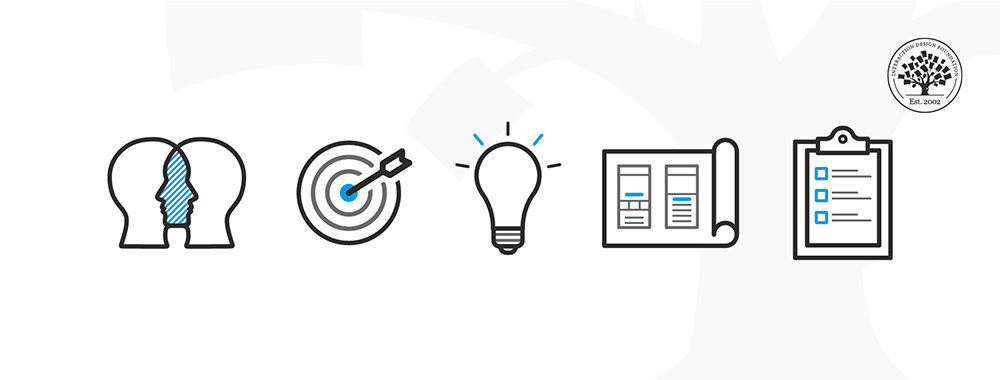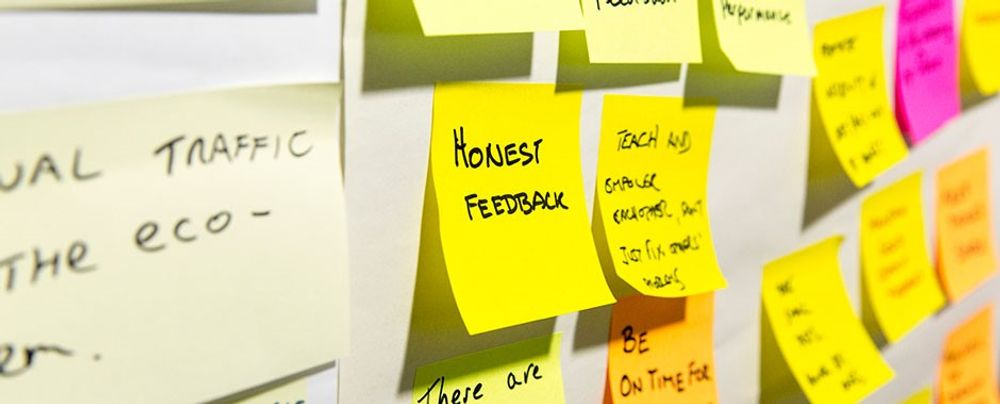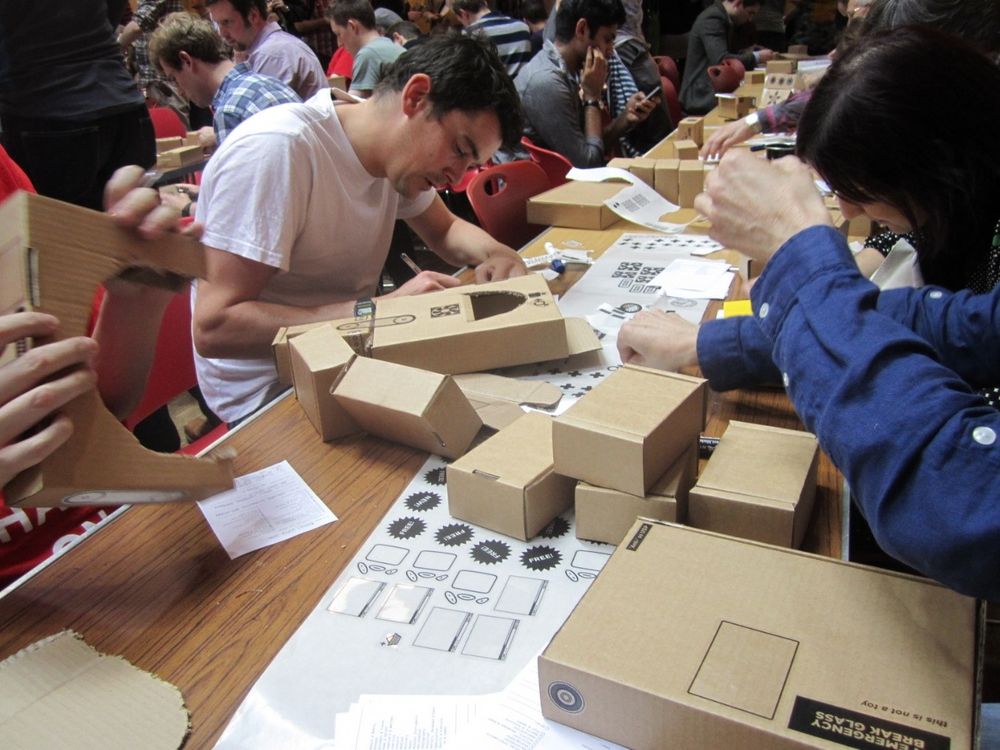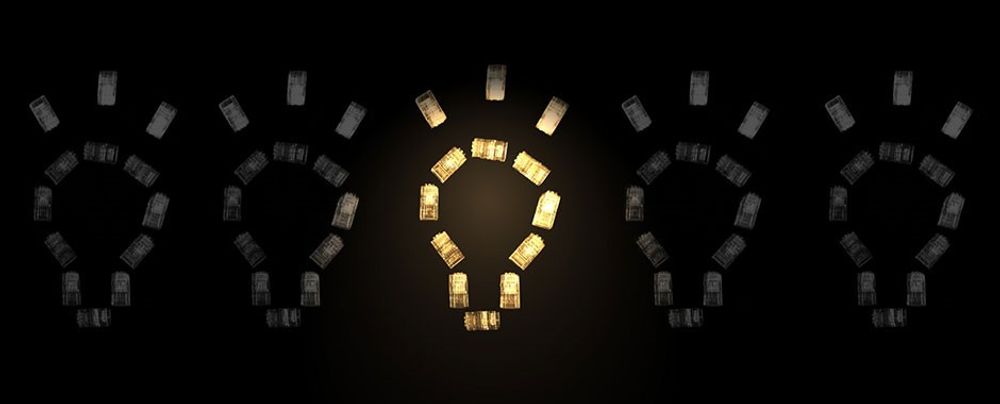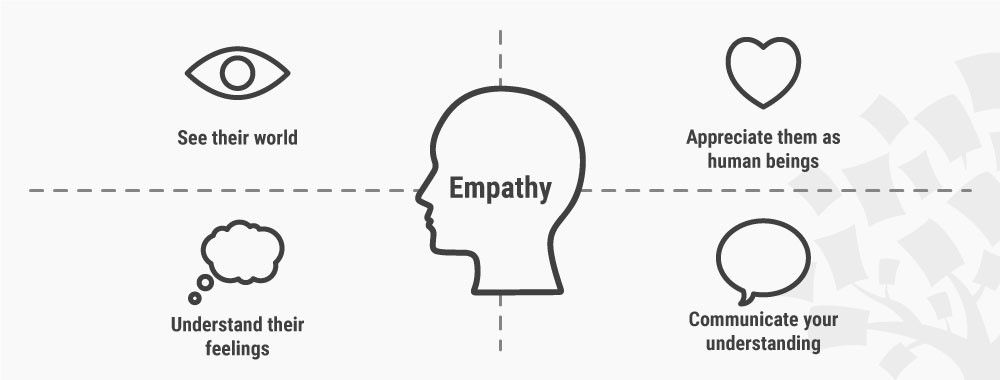The spaces we occupy deeply influence our experiences, our feelings, and our behaviors. Our state of health, psychology, productivity, mood, and creativity spaces influence us on many levels and also influence our interactions with each other. The spaces in which we journey through Design Thinking and Ideation sessions must be set up in such a way that they facilitate the purpose behind each phase or step appropriately. This involves creating an environment in which the team is free to embrace the mindsets required at each point in their process without the intervention of others who may not understand what they are doing and why.
Freedom to Think and Express
With all their thoughts out in the open, Design Thinking teams may feel slightly vulnerable to outside eyes, but with a protected free space they will feel more at home throwing forward everything they have to offer.
The right kind of environment helps to create a creative work culture and influences the way people see and do things, as well as how they interact with each other. Instead of boardrooms with the CEO at the head of the table, Design Thinking and ideation sessions requires a space that levels the playing field and puts everyone on an equal footing.
Fluid Spaces
The Design Thinking team may require the configuration of the space to change throughout the process. With their vision clearly pinned to the walls, Design Thinking teams and ideation participants are more easily able to keep their eye on the purpose of the challenge at hand, while allowing the influences of their exploration to tug constantly at their understanding.
Creating such a space means having room to move, wall space to stick up charts and ideas, white boards or paper charts for gathering data into meaningful collections and to make visual connections using drawn lines and other visual methods. Later on in a Design Thinking process, the room should provide enough space for building prototypes and testing models.
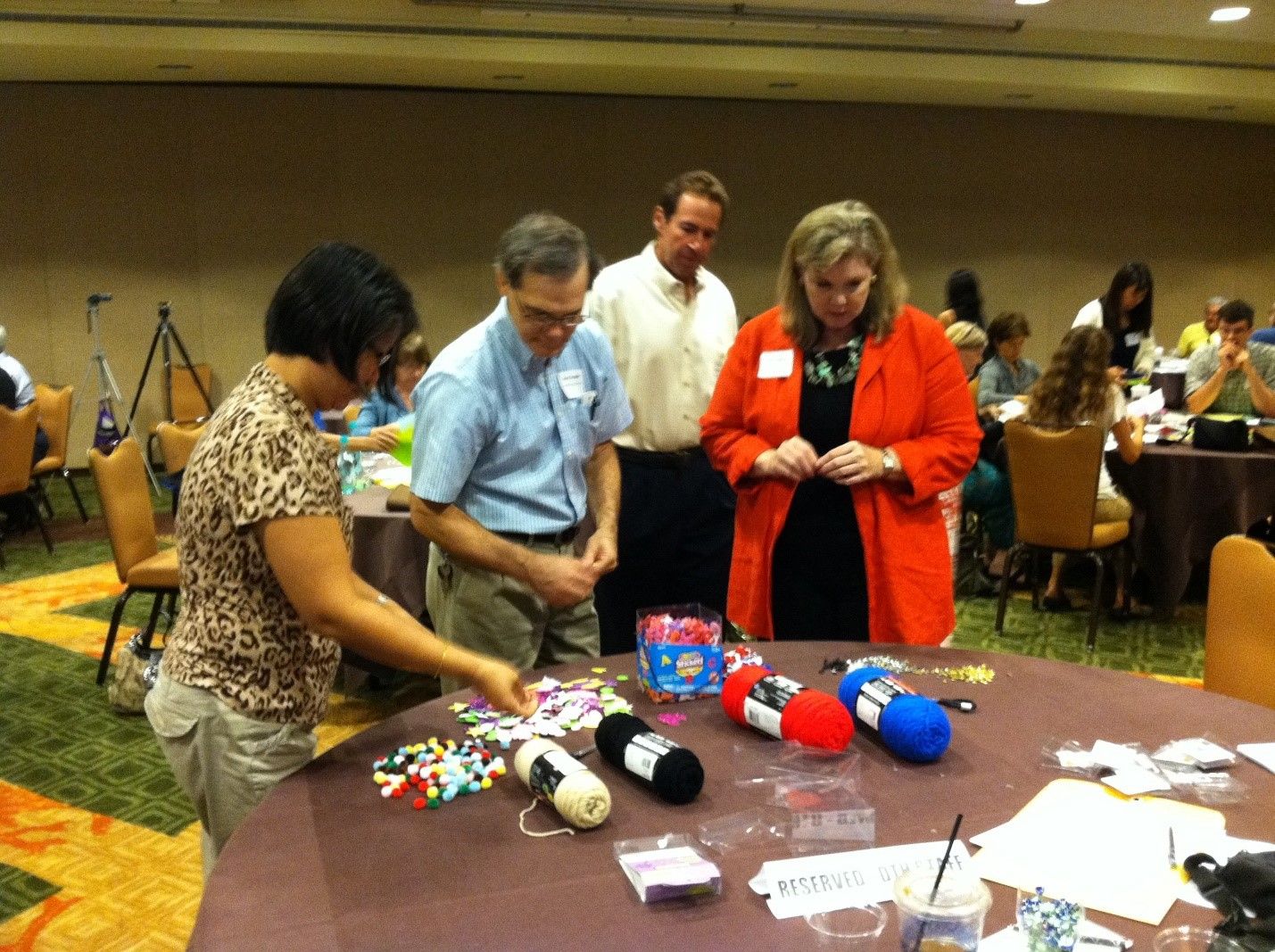 Author/Copyright holder: Bytemarks. Copyright terms and licence: CC BY 2.0
Author/Copyright holder: Bytemarks. Copyright terms and licence: CC BY 2.0
Round tables work well when you want people to collaborate during ideation and prototyping sessions – and so does standing up. Ideally, the Design Thinking and Ideation space should be located away from work environments, which stifle creativity or remind participants of stressful activities and time pressures. This picture is taken at a Design Thinking Workshop for educators held at the Sheraton.
Tips and resources for creating an innovation space
Scott Doorley and Scott Witthoft, directors of Environments Collaborative, co-authored a book with support from the design school known as Make Space. The book outlines tools, templates, building methods, and situational plans for creating collaborative spaces that foster a culture of innovation. The following checklist provides an idea of elements that may assist in creating the ideal Design Thinking space.
Checklist for the Ideal Ideation and Design Thinking Room and Requisites
The following checklist provides an idea of elements that will assist you in creating the ideal ideation session and design thinking space:
Space: Make sure you have enough space for all participants. Ideally, the Design Thinking and Ideation space should be located away from work environments, which stifle creativity or remind participants of stressful activities and time pressures.
Whiteboards and Flipcharts: These are generally portable and lightweight as they are the centre of attention at many design thinking sessions. You’ll see that they’ll soon be covered with sticky notes featuring handwritten ideas.
Room: A light and natural environment to encourage creativity.
Illumination: Make sure to choose a room with plenty of daylight. If possible, you should choose a room with large windows to post sticky notes on—or even draw or write directly on them if you have the right kind of markers, of course! Warm natural colours and materials are more supportive than sterile cold surfaces.
Air: Good ventilation and fresh air if the weather allows for it.
Temperature can support creativity. Research has identified that the correct temperature for sitting and working at a desk is between 22°C – 25°C. However ideation sessions and design thinking sessions will include a lot of standing and moving around so you should probably consider setting the thermostat a little lower.
Acoustics: It often gets quite loud when people explain their ideas to each other. Make sure that the acoustics are great and that there’s no echo.
Elevated tables and chairs: will encourage participation in the ideation processes. Elevated furniture allows people to come as close together as possible. The upright position keeps participants engaged. If possible, find a room where there’s a couch to use during the breaks or to sit back and relax in while the other teams present their findings and results.
With your perceptions, plans, people and places in order, your preparations for ideation and Design Thinking sessions should be perfect.
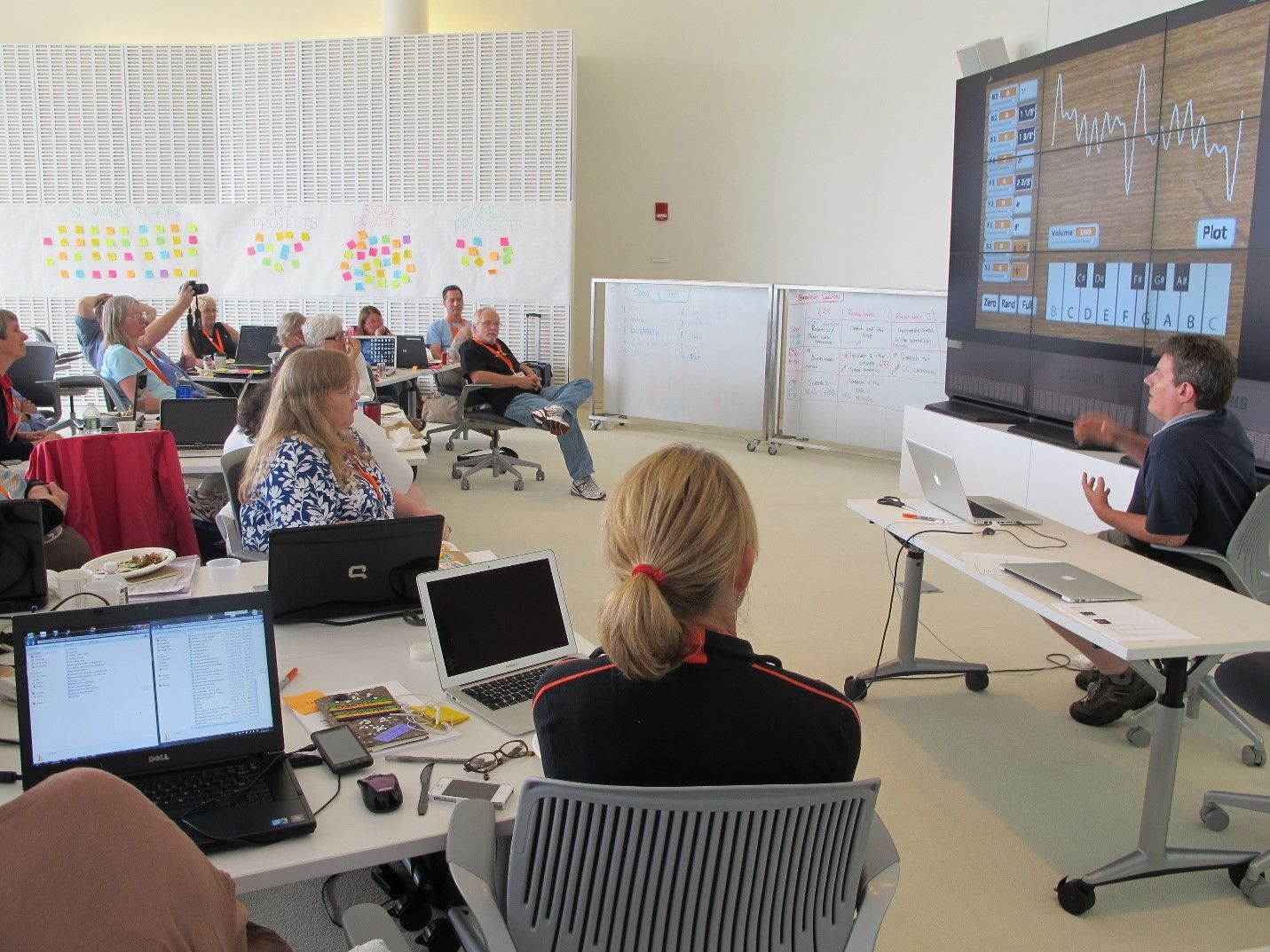 Author/Copyright holder: ScratchEd Team. Copyright terms and licence: CC BY 2.0
Author/Copyright holder: ScratchEd Team. Copyright terms and licence: CC BY 2.0
Creative office space at the MIT Creative Computing 2012 workshop which was held at the MIT Media Lab.
Ideation Material
Paper
Sticky notes (as large as possible, a range of colours, five different types)
Markers (whiteboard markers, permanent markers, many different colours and not too thick)
Prototyping Materials
Magazines (for collages)
Cardboard
Tape (duct tape)
Glue
LEGO or Duplo
Blue tack
Do you want to learn how you can get started creating a suitable space for your team’s next ideation sessions – and for your whole Design Thinking process? Then you can download and print our “Create Some Space” template:
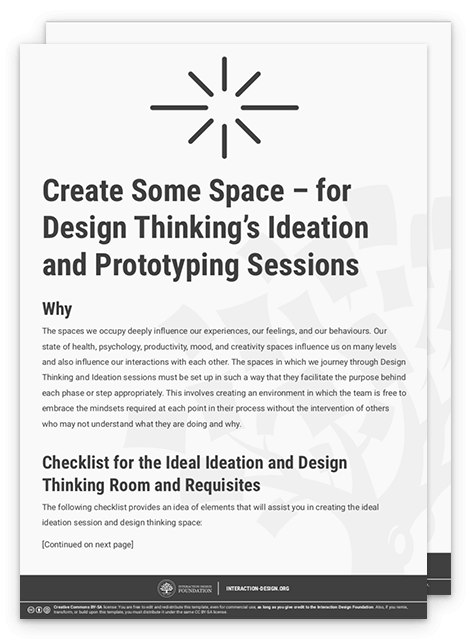

References & Where to Learn More
SAP User Experience Community. The Ideal Design Space. 2014.
Ella Miron-Spektor, Miriam Erez, and Eitan Naveh. To Drive Creativity, Add Some Conformity. Harvard Business Review, March 2012.
Scott Doorley and Scott Witthoft, Make Space: How to Set the Stage for Creative Collaboration, 2012.


